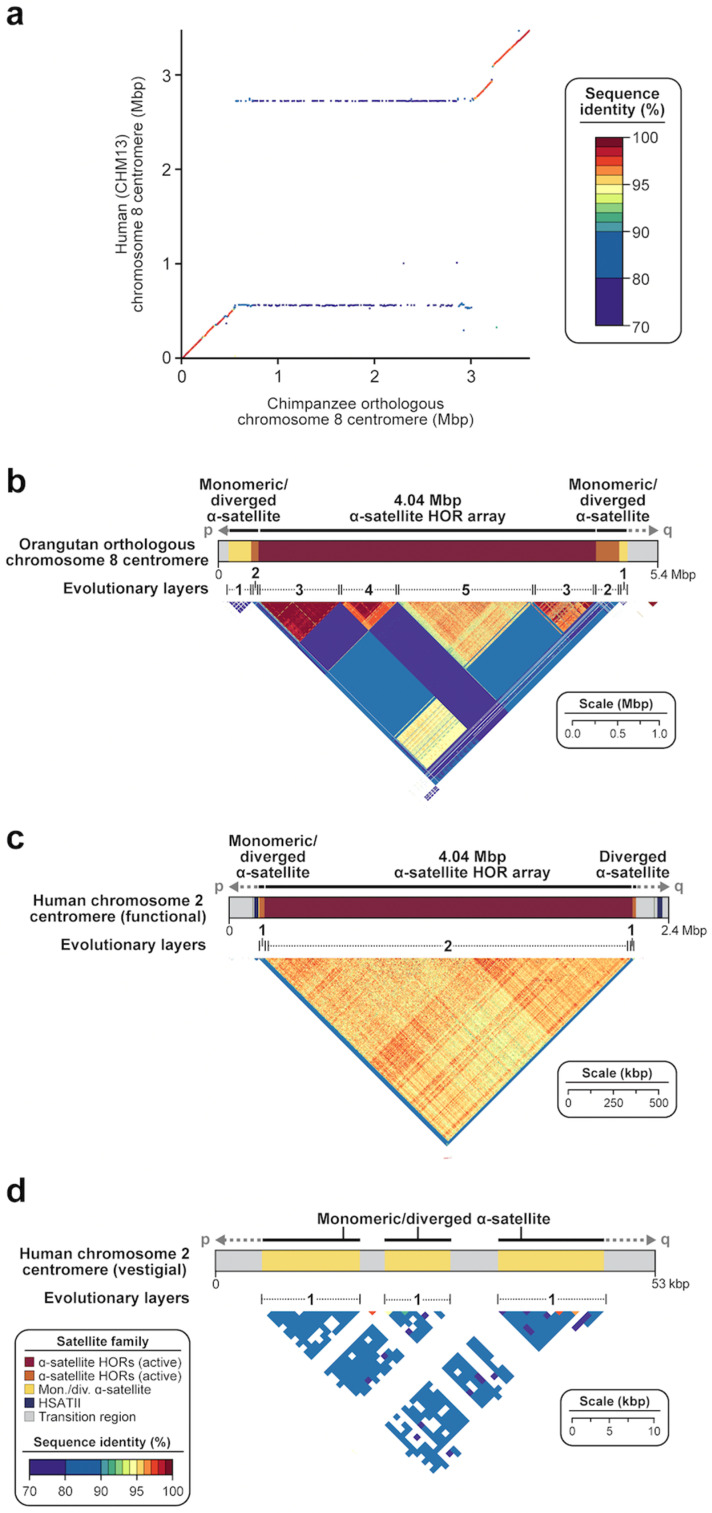Figure 6.
Evolution of centromeric satellite regions. (a) Dot matrix plot showing pairwise sequence identity between human (CHM13) and chimpanzee chromosome 8 centromeric regions. While there is >95% sequence identity in the monomeric α-satellite sequences and 70–80% sequence identity in the transition regions between monomeric α-satellite and α-satellite HORs, there is almost no sequence identity shared between sequences in the α-satellite HOR array. Despite being similar in size, the two apes show nearly complete turnover of their α-satellite HORs, with best matches occurring at the periphery (horizontal lines). (b) StainedGlass view [56] showing the organization and pairwise sequence identity among 5 kbp segments across an orangutan orthologous chromosome 8 centromere. Orangutan α-satellite HOR arrays are composed of mosaic blocks of α-satellite HORs with <95% sequence identity shared between them. Adapted from [42]. (c,d) StainedGlass view [56] showing the organization and pairwise sequence identity among 5 kbp segments across (c) the functional human (CHM13) chromosome 2 centromere and (d) the vestigial human (CHM13) chromosome 2 centromere. The vestigial centromere is a remnant of the chromosome 2B centromere present in chimpanzee. It is highly degraded and reduced in size with little obvious α-satellite HOR structure, owing to its inactivity.

